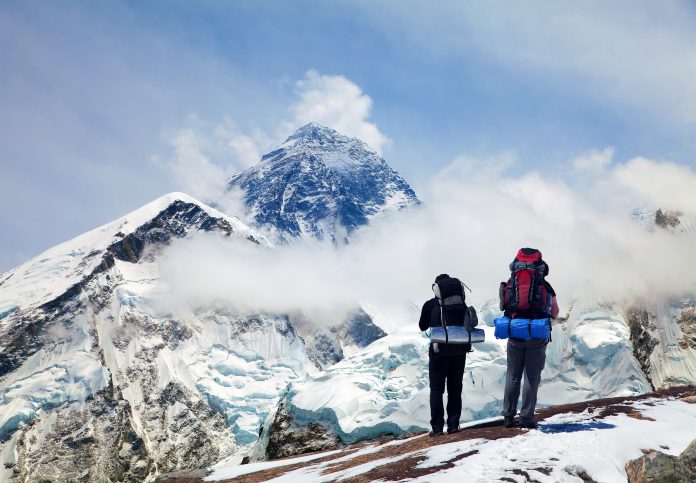Moderately Difficult – that would be the two-word answer to the question. However, what defines moderate difficulty? Given that the terrain for the Everest base camp trek is not usual, will this moderate difficulty be okay for you? Or will you require some specific preparations? Some blogs talk about training dedicatedly for the EBC trek for three to four months – should this training be tough, or even basic exercises can be enough? Will one have to carry loads of clothing along, or just a couple of trekking basics will do?
Well, all this and a lot more is covered in this blog, and so, here we go.
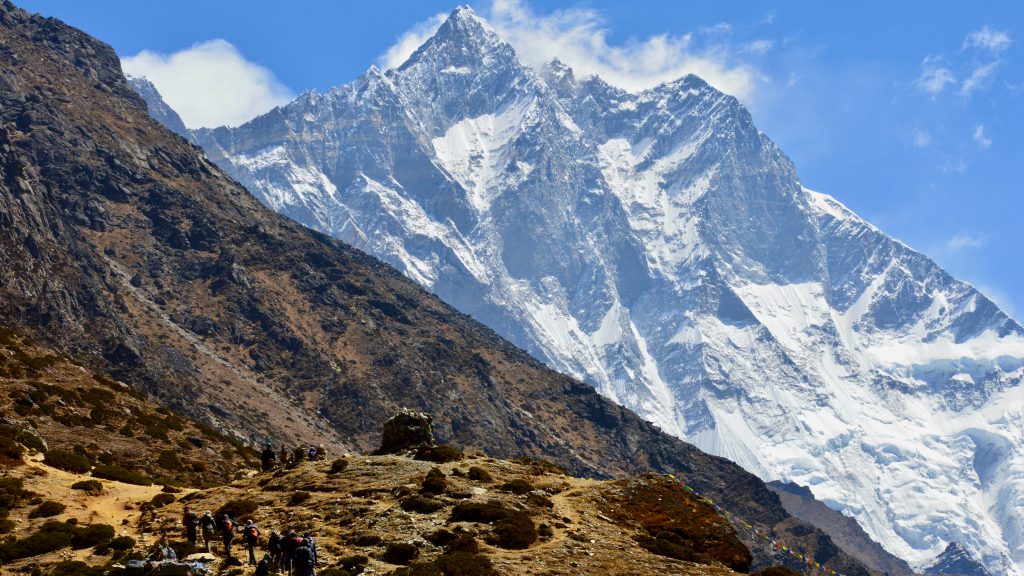
Setting the Basics for the difficulty level of the EBC Trek.
The first misconception that should be cleared here is that EBC Trek is NOT an expedition. The trek is roughly 150km long, and the altitude gain is from 2,400+ metres to roughly 5,624 metres (Kala Patthar). Most of the trekking days, you would experience a steep incline during the second part of the day’s climb. The difficulty usually increases in case it rains or snows. Then comes the issue of altitude sickness that can happen because of the reduced oxygen at higher altitudes.
However, please be assured that none of these challenges aren’t something that you cannot overcome. Dedicated training, adequate preparation and the company of a trained guide is all you need to brave them.
What makes the EBC Trek Moderately Difficult?
Length of the EBC Trek
The trek lasts a minimum of 12 days. To be clear, it doesn’t mean 12 days of continuous walking, but for most people who have lived on plains, being in the hills for 12 days can be slightly difficult. The overall length of the trek is 150km. However, it is spread over 12 days, with 2 days dedicated to acclimatization. This means that you will walk roughly 10-15km a day- which is not too much by any trekking standards. (While going to the Everest Base Camp, one has to walk around 8-10 km per day. However, while coming down, the walk is around 15-20kms, as we are already acclimatised and descending.) The challenge, however, comes because of the terrain. As you’ll notice when you do it, the trek is rocky with snow/ice around at higher altitude.

Sharing a tentative itinerary of the trek for your perusal:
- Day 1: Arrive at Kathmandu
- Day 2: Fly from Kathmandu to Lukla, Trek to Phakding
- Day 3: Trek from Phakding to Namche Bazaar
- Day 4: Acclimatisation Day at Namche Bazaar
- Day 5: Trek from Namche Bazaar to Tengboche
- Day 6: Trek from Tengboche to Dingboche
- Day 7: Acclimatisation Day at Dingboche
- Day 8: Trek from Dingboche to Lobuche
- Day 9: Trek from Lobuche to Gorak Shep and then trek to Everest Base Camp
- Day 10: Sunrise trek to Kalapatthar then Trek to Pheriche
- Day 11: Trek from Pheriche to Namche Bazaar
- Day 12: Trek from Namche Bazaar to Lukla
- Day 13: Fly from Lukla to Kathmandu
- Day 14: Sightseeing at Kathmandu
- Day 15: Buffer day – for rest or try activities like Bungee Jumping/River Rafting
- Day 16: Departure from Kathmandu
Altitude and Related Sickness
This is one of the biggest contributors to the difficulty of the EBC trek. The trek starts from Lukla, which is at the height of 2,846 m above mean sea level. The EBC stands at 5,364 above mean sea level. At the highest point of the trek, i.e., Kala Patthar, you would be 5,644 m above mean sea level.
Trekking to these altitudes is not usual, and again, for people who have lived at lower altitudes, it can result in acute mountain sickness. Acute Mountain Sickness, or AMS as it is called, may result in dizziness, loss of appetite, swelling of hands and feet, nausea, insomnia, and shortness of breath.
Altitude Sickness may be avoided by following precautions.
- Make sure you are fit to undertake this trek – check out our blog on how to be fit for EBC
- Climb Slowly, while maintaining a healthy pace so that we reach in prescribed time
- Drink plenty of water during the trek. Follow the 20 steps rule. After every 20 steps, take a small sip of water. Drink at least 3-4 litres of water during the trek.
- Eat balanced meals. Avoid meat, dairy, fried food during the trek. Avoid heavy dinners. Eat plenty of vegetables, fruits and a balanced diet of carbohydrates, proteins and fats.
- Do not smoke or drink alcohol during the trek. Avoid any kind of intoxication.
- Sleep well. Sleep for at least 8-9 hours during the trek. Sleep will help in recovery after a strenuous hike.
- Avoid stress. Keep a calm mind and enjoy nature. A trek like this may be full of unexpected surprises. Keeping a cool head helps in adjusting to nature.
- Avoid antibiotics or medicines. Check with your doctor before taking any medication during the trek.
- Do deep and mindful breathing exercises. Deep breathing will help increase oxygen in the blood.
- If you get any of the symptoms, inform the trek lead immediately. If the symptom persists, descend to a lower altitude immediately.
The Weather Conditions
Another factor that contributes to the trek’s difficulty is the unpredictable weather. The monsoons in Nepal happen from June until August. While many trekkers still do the EBC trek around this time, the conditions are usually not the best. This is because of the incessant rains that make the slopes extremely slippery. Similarly, the conditions are extremely cold and harsh in the months of December, January, and February. There can be strong winds, too, which can result in low vision putting the trekkers at risk.
For this reason, most people trek between March to May and then from September to November. Check out our blog to know the pros and cons of both these seasons.
Now, while both of these stretches are good for the EBC trek, don’t be surprised if you experience all the 4 seasons well within a day!
For this reason, it is important to take well-qualified and trained guides along.
How to Overcome these Challenges
Now, we talked about all the difficulties one faces on these treks. However, remember that we told you this trek is of “MODERATE Difficulty.” If we had to crack a joke here and draw a comparison, handling the Bangalore Traffic or braving the Mumbai Rains would be more difficult. Anyway, while the EBC trek has its share of challenges, none of them are the kind you cannot overcome.

All you need to do is to plan your trek carefully.
Choose the right time for the trek.
We said this just one paragraph ago! March to May and September to November are the best times for the EBC Trek. However, both of these periods come with their good and bad. For instance, if you want a comparatively friendlier trek, go from Sept to Nov. However, there will be a lot of people trekking at that time so you won’t get your “spiritual time out with nature.” On the other hand, you can get the latter from March to May. But then, it is usually warm, so that the slopes may get slippery because of the melting snow.
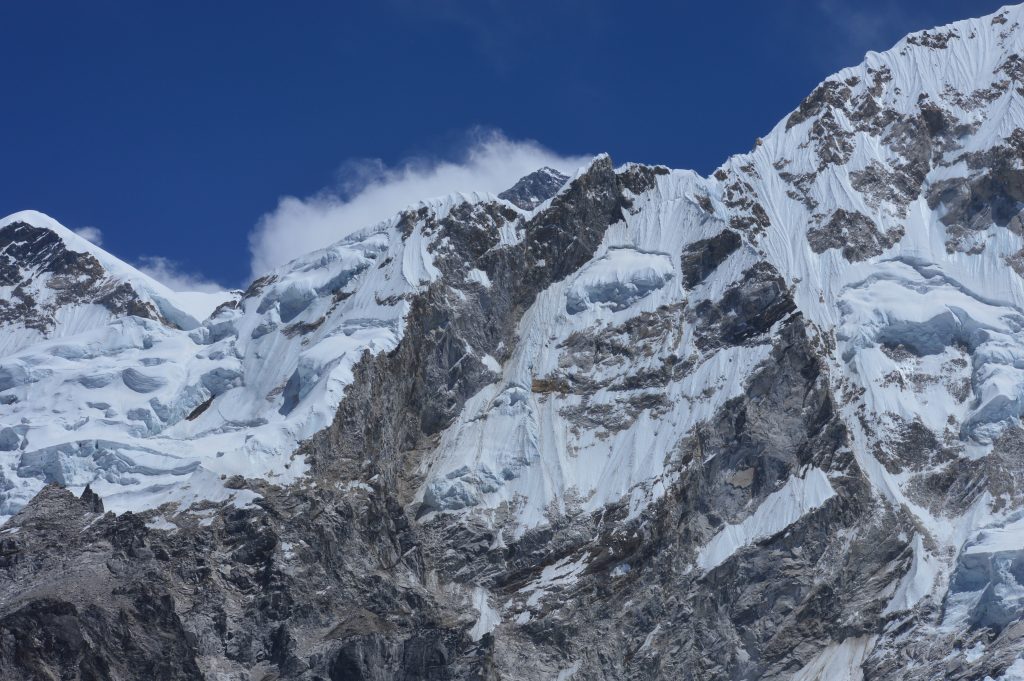
Read more about these two best EBC trek periods in our blog!
Be prepared with the essentials.
So, there is a dedicated list of things you should carry on the Everest base camp trek. For instance, having a four-layered clothing ensemble handy, having a trekking pole, a headlight, or even a sleeping bag, or things like that can ensure that your trek is smooth.
You see, these aren’t some heavy-weight equipment. They are fairly simple tidbits, but they have a lot of significance. Something as small or insignificant as a pair of sunglasses can kill your experience.
Hence, it is always better safe than sorry.
Again, we have a dedicated blog that talks about the EBC Trek essentials. You can read this blog here.
Get your Vaccinations and Health checks done.
The vaccination bit is more relevant for trekkers coming from outside India. However, the health check bit is relevant for all. Please make sure that you consult your physician and get a go-ahead from them on your fitness levels before undertaking the EBC trek.
Train in Advance
EBC Trek tests your endurance big time. Hence, you must train prior and train well. Also, it is important to note that when you trek to EBC, you will have to carry a weight of roughly 6-12kgs. Hence, it is important to ensure that you do adequate weight training too. In addition to this, you have to take care of your diet as well.
Here’s a quick 8-week regime of curated exercises that we’ve built to help you reach the best fitness level for the Everest Base Camp Trek:
Stair Climbing
- Days: Mon, Thurs
- Routine: 5 min – (2.5 min continuously*2 sets) with a 1 min break between each set
- How will this help – Pushing your body against gravity is a great cardiovascular activity. Stair climbing helps strengthen the muscles around your knees and helps build endurance.
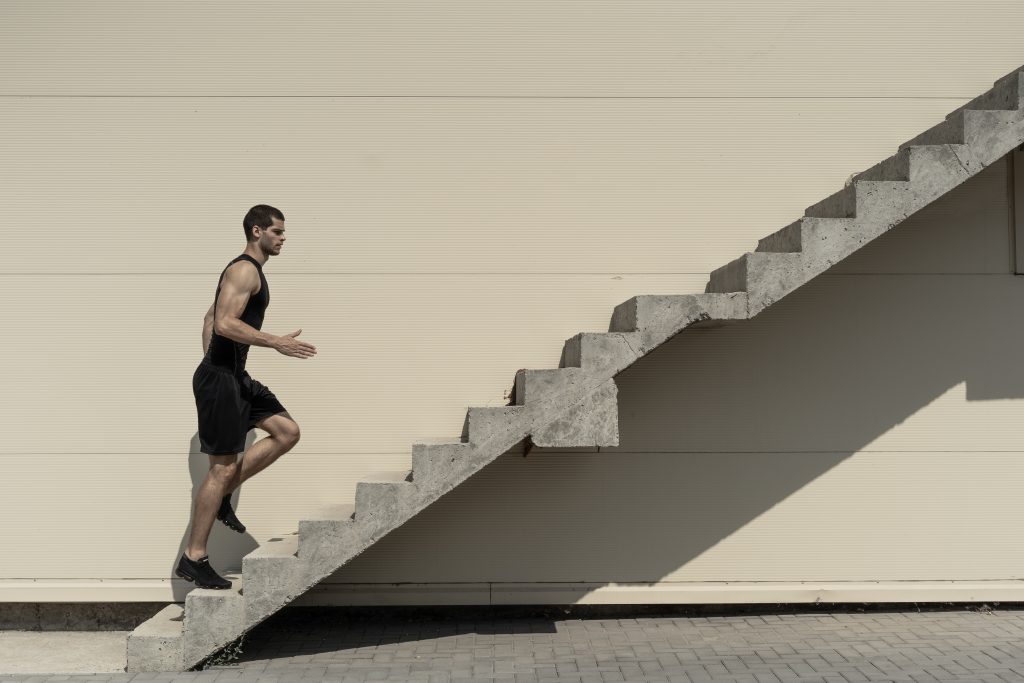
Push-Ups
- Days: Mon, Thurs
- Routine: 5*2 Set (10) – (1 min rest between each set)
- How will this help – Push-ups help you build a stronger upper body while strengthening your core. This exercise helps when you have to ascend while carrying a backpack.
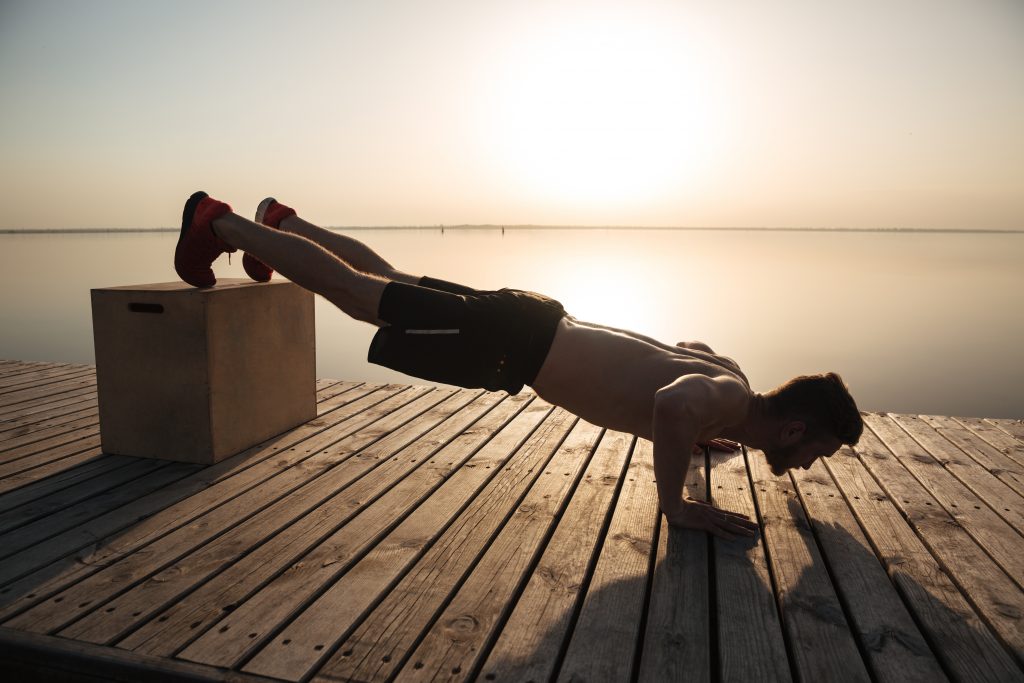
Squats
- Days: Mon, Thurs
- Routine: 5*2 Set (10) – (1 min rest between each set)
- How will this help – Squats are the best form of functional fitness. They promote balance and stability and strengthen legs, thighs, hips, buttocks, and hamstrings.

Crunches
- Days: Tues, Fri
- Routine: 5*2 Set (10) – (1 min rest between each set)
- How will this help – Crunches work on your abdominal muscles to build your core strength. This exercise will help you keep your balance on uneven surfaces.

Interval Running
- Days: Tues, Fri
- Routine: 15 min – (alternate 60 secs of continuous running 90 secs brisk walk)
- How will this help –Running is a great cardiovascular workout, it is also an aerobic activity that uses more oxygen. This workout helps make your lungs stronger.

Burpees
- Days: Tues, Fri
- Routine: 5*2 Set (10)- (1 min rest between each set)
- How will this help – Burpees is a great full-body strength training exercise and the ultimate example of functional fitness which helps abs, hamstrings, chest, glutes, and arms.
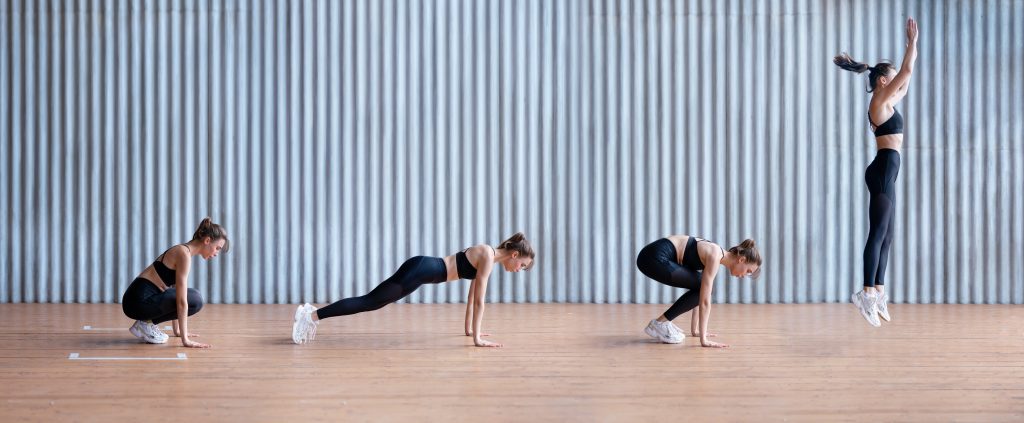
Rest
- Days: Wed, Sat, Sun
- How will this help – Rest is an integral part of your fitness routine which must not be missed. Overdoing it can cause an unnecessary injury to your body.
There are many other things too. Read more about them here!
So fellow Nomads. That was it from our side.
Hopefully, this made you realize that you can also easily do the Everest base camp trek.
Our next set of treks to EBC will start in September.
Click here to know the departure details.
